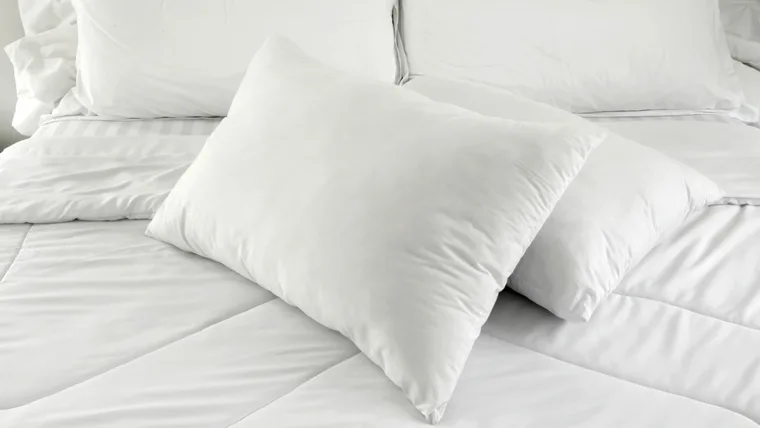When it comes to sound sleep, one often overlooked factor is the quality and condition of the pillow. People spend most of their lives with these essential accessories, but how often do they stop and consider replacing them? So in this article, you can explore and learn the signs and guidelines to bid farewell to your trusted sleep companions – bed pillows.
Signs to Replace
Flattening Out: When Comfort Turns Uncomfortable
Over time, pillows can lose their plushness and become flat and lumpy, compromising their ability to provide proper support. You’ll find yourself constantly readjusting throughout the night or waking up with discomfort, a lack of support, or even neck and back pain. This may be a clear sign that it’s time to bid farewell to your current bed pillows or headrests and invest in a fresh and supportive replacement. So, pay attention to these signs, as they indicate the diminishing effectiveness and the need for a change to ensure a comfortable and restful sleep experience.
Allergen Accumulation: A Cause for Concern
Pillows can accumulate dust mites, pollen, and pet dander, creating an environment that can trigger allergies and disrupt sleep. So, suppose you notice an increase in allergy symptoms or find breathing difficult during sleep. In that case, it’s crucial to consider investing in new sleep companions to alleviate these issues and promote a more comfortable and allergen-free sleeping experience. Nevertheless, your health and well-being depend on it.
A Not-So-Supportive Support: Changes in Structure
Pillows may lose shape and structure as they age, leading to uneven support and potential spine misalignment. So, if you wake up with neck or back pain or experience discomfort in pressure points, it strongly indicates that your sleep companions are no longer providing the necessary support. It is because worn-out ones may not be able to distribute your body weight evenly, causing pressure points to develop in areas like your neck, shoulders, and hips. As such, investing in new, high-quality ones can help you avoid these issues and ensure you wake up refreshed and pain-free.
Guidelines for Replacement
Rule of Thumb: The Two-Year Marker
As a general guideline, replacing your sleep companion every two years is recommended. This timeframe accounts for the wear and tear naturally occurring over extended use, ensuring that you continue receiving optimal support and comfort. However, it’s important to note that the lifespan may vary based on factors like the quality of the materials and how frequently you use them. Memory foam pillows typically last three to five years, while latex or down-filled pillows may last up to eight years. So, consider the fabric of your pillows and follow the manufacturer’s recommendations for replacement.
Taking Your Sleep Style Into Account
Your sleep style can also impact the lifespan of your bed pillows and cushions. Side sleepers tend to exert more pressure, requiring more frequent replacements than back or stomach sleepers. So, take your sleep style into consideration and adjust your replacement schedule accordingly. Similarly, if you sweat or drool heavily while sleeping, your pillow may wear out faster due to increased moisture exposure. In those cases, replacing it more frequently is recommended to avoid potential health risks and discomfort.
Pillows are vital to overall sleep quality and well-being. Although they often go unnoticed, they require periodic evaluation and replacement to continue providing comfort and support. And by paying attention to the signs of wear and tear and adhering to general guidelines, you can ensure that your sleep companions remain dependable for years. So, don’t underestimate the impact of replacing these unsung heroes of sleep, and bid farewell to discomfort for a restful and rejuvenating slumber.
